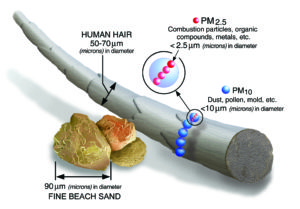The White House Environmental Justice Advisory Council recently weighed in on EPA’s decision whether to lower the National Ambient Air Quality Standards for PM2.5 and ozone. 
Specifically, with respect to PM2.5, WHEJAC recommended that the annual primary standard be lowered to 8.0 ug/m3 and the annual daily standard be lowered to 25.0 ug/m3. Both recommendations are lower than what EPA has proposed.
With respect to the ozone NAAQS, which EPA has proposed remain at 70 parts per billion, WHEJAC recommends that EPA lower the NAAQS to “the low end of the range recommended in the forthcoming review by EPA’s Clean Air Scientific Advisory Committee….” As I’ve noted previously, CASAC has recommended that the NAAQS be set somewhere in the range of 50-60 ppb.
This administration has paid a lot of attention to EJ and the NAAQS for PM2.5 and ozone are important EJ issues. As WHEJAC notes in its letter, both PM2.5 and ozone disproportionately impact EJ communities.
EPA’s decision on both the PM2.5 and ozone NAAQS will thus be an important test of the political power of the EJ community. The economic cost to comply with NAAQS in the ranges recommended by WHEJAC would be substantial. It is worth noting that WHEJAC stated that:
EPA should finalize the new ozone NAAQS no later than Spring 2024 to ensure maximum durability of the regulation given potential political vulnerabilities.
In other words, WHEJAC wants EPA to finalize stringent NAAQS while EPA is still controlled by a Democratic administration and the Senate is in Democratic hands, thus preventing a legislative rollback under the Congressional Review Act. On the flip side, as I also previously noted, EPA has indicated that it does not intend to promulgate a new ozone NAAQS until December 2024, after the election, presumably to ensure that EPA’s decision does not become an election issue for the GOP.
Can you say “horns of a dilemma”? Does the Biden administration timely address EJ concerns – which have significant science behind them – in order to insulate its decision from later Congressional review? Or does it delay its decision to maximize the likelihood that it will still be around in 2025 and thus able to avoid the inevitable rollback of EJ progress that would follow a GOP victory in 2024?
Politics is a messy business.